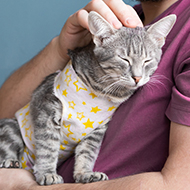Scottish bird species hit by climate change
Chiffchaffs increased by 1428 per cent due to warmer temperatures.
An official statistic report for 66 terrestrial breeding bird species in Scotland has revealed population increases for 36 species.
The data, recorded by NatureScot between 1994 and 2023, revealed an indicator increase of over 50 per cent for woodland birds in Scotland.
This includes a 1428 per cent increase in chiffchaffs, which NatureScot believes could be due to increasing temperatures. Great spotted woodpecker numbers increased by 699 per cent, while the number of blackcaps increased by 593 per cent.
However NatureScot says that increasing temperatures and climate change may also be contributing to the decline of some of the 23 species which have seen more negative indicator results.
Among the population declines which have been attributed to climate change is the capercaillie, which has declined by 17 per cent since 1994. NatureScot believes this could potentially be linked to rising temperatures, as well as fatal collisions with fences.
Upland birds have been hit the most by population declines, recording the largest indicator decrease of 20 per cent for their category.
Breeding numbers of curlews are reported to have declined by over 60 per cent, with this reduction linked to land management, climate change and food availability.
As well as climate change, long term changes for some bird species have been linked to other factors. This includes forest expansion, as well as site-based management practices such as grazing and predator control.
Similarly, swifts have been experiencing a long-term decline of 60 per cent. This may be due to a lack of nesting sites on buildings, as well as a shortage of flying insects for their sustenance.
NatureScot says that targeted action and research is underway in Scotland to restore breeding habitats for these birds and improve its understanding of their declines.
Simon Foster, NatureScots trends and indicators analyst, said: “Since many bird populations are widespread and abundant, can respond quickly to environmental change, and are well surveyed in the UK through volunteer-based and professional surveys, they are useful biodiversity indicators.
“This report clearly shows that the emerging long-term differences in Scotland’s terrestrial breeding bird populations are dependent on a species’ ability to adapt to climate and habitat changes.”
Image © Shutterstock



 RCVS Knowledge has called on vet practices to audit their post-operative neutering outcomes.
RCVS Knowledge has called on vet practices to audit their post-operative neutering outcomes.